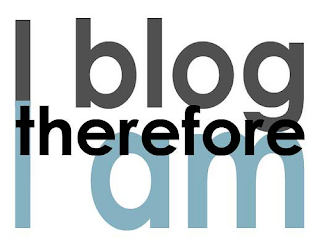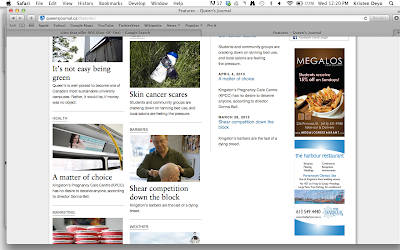Is there anyone without a blog these days? It's estimated that 6.7 million people blog through blogging sites and over 12 million people blog via social media networks. But with all those blog posts floating around, are we writing the best content we possibly can? The truth is whether you're a blogging newbie or a seasoned veteran, we can all learn a thing or two about writing better blogs!
Here are some tips on how to write a great blog-post:
1. State your purpose.
This may sound obvious, but it's truly astonishing how many blogs aren't clear about what it is they are writing and why. With so many blogs out there it is important to know what your blog is going to be about from the get-go or else your reader may just advance to GO and collect information from someone else's blog.
2. Be authentic. Be yourself.
Whatever you do, always remember to be YOU. Write about things that inspire you - that you love and take an interest in. Write about things that matter. Having this focus will help enhance your writing.
3. You can't win them all!
Remember that not everyone will love what you write about and it really doesn't matter. While keep your audience in mind is important, writing to please everyone is impossible.
4. Your title and/or headline should not be lengthy and boring - they should instead grab people's attention.
Be honest. Was that headline not painful to read? Were you not praying for it to be over? Exactly. I believe in keeping headlines simple but smart. Blogger Jeff Goins has a great blog-post with 5 tricks to help you catchy headline!
5. Design has it's place.
Aren't we all a sucker for beautiful things? Well, blogs are no different in my books. Even if your content is amazing, if it's being overshadowed by a hideous, dysfunctional and cluttered design then you might as well never hit the publish button.
6. We're visual creatures.
adding relevant visual components to your blog will only further enhance it. Don't bog your reader down with unrelenting text!
Now let's look at 3 Blogging veterans and see how they measure up!
1. Bernadette Jiwa, TheStoryofTelling.com
Blog-post: "Being Undervalued vs. Being 'The One'"
I absolutely loved this post and love her blog in general. There are always catchy titles and headlines, visuals in all of her posts. She writes honestly and opening - almost conversational - and has a clear focus and purpose at the beginning of her post. The design is also clean and simple with a uniform color scheme throughout. Bravo Bernadette!
Blog-post: "Watching Me Blog"
While the headline might not be catchy, it is concise and to the point. Mitch is clear with his message and writes from an honest and authentic point of view. The design of the overall blog and blog-post is also neat using bolded headlines, italics for better readership. However, Mitch fails to use any visuals in his post which makes it a little boring - but who am I to say anything?
3. Seth Godin, SethGodin.com
Blog-post: "Understanding Luxury Goods"
Zzz... Ok. While the post is focussed, written authentically and has a straight-forward title, there are absolutely no headlines, no visuals (or anything visually interesting for that matter) and the design is lacklustre to say the least. The post goes on seemingly forever that I lost interest. But I suppose his blog fits in with tip #3 - you just can't win them all, can you?
So, what have we learned? Blogging isn't always easy and no matter how experienced you are as a blogger we can all improve our writing. What are some of your blogging tips? What rules do you live by when writing? Love to hear your thoughts!













